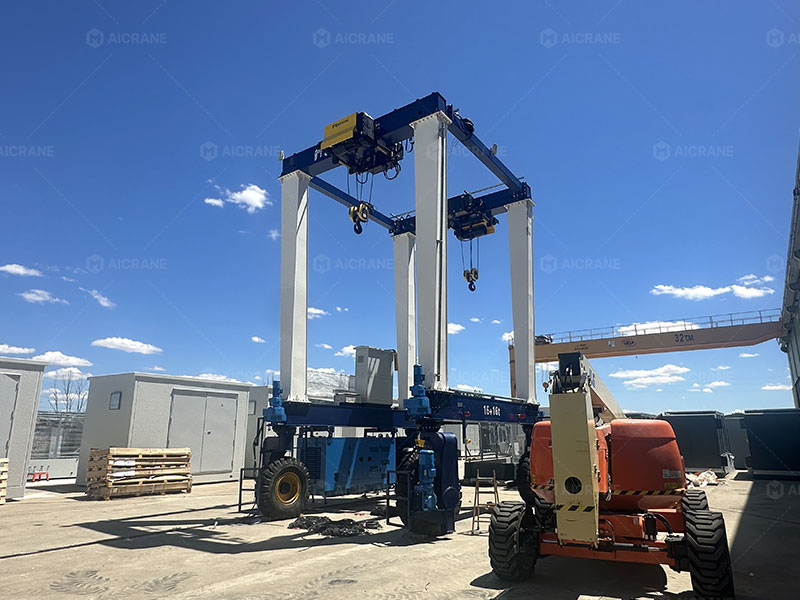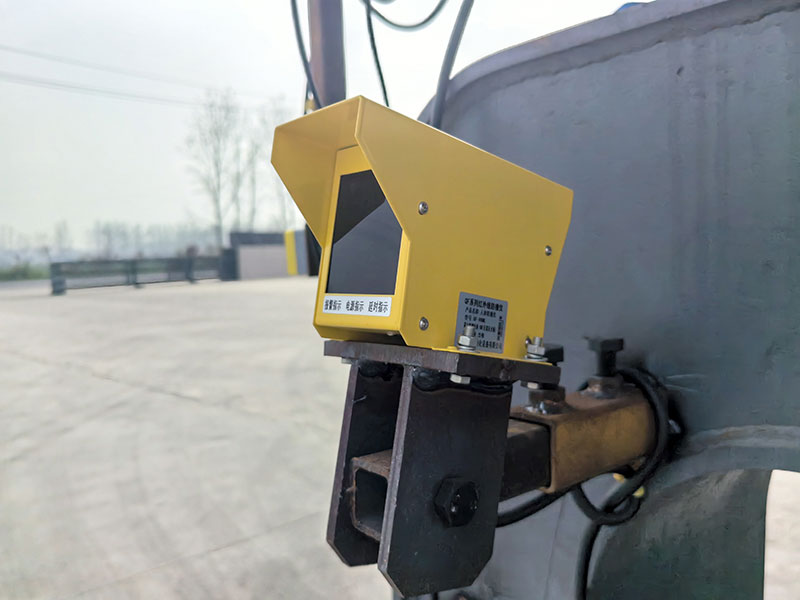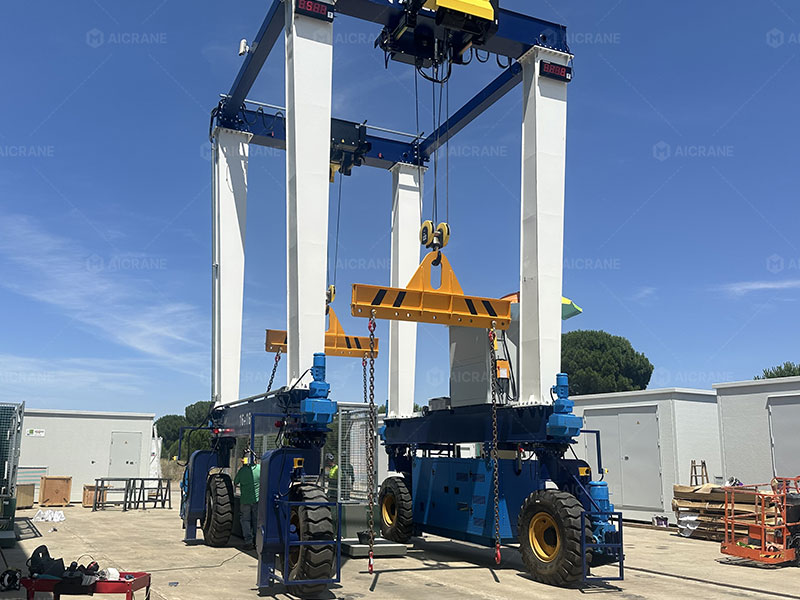As container terminals and industrial yards become increasingly busy and complex, safety and efficiency are more critical than ever. One of the most significant technological advancements in recent years has been the development and integration of Smart Anti-Collision Systems (SACS) for Rubber Tyre Gantry (RTG) cranes. These systems play a vital role in preventing accidents, protecting valuable assets, and ensuring smooth operations in container handling and intermodal facilities.
In this article, we’ll explore the importance, working principles, types, benefits, and future trends of smart anti-collision systems for rubber tyred gantry cranes.

Understanding the Need for Anti-Collision in RTG Cranes
RTG cranes are essential for container stacking and loading/unloading operations in terminals and yards. Unlike rail-mounted cranes, RTGs are mobile and flexible, which makes them extremely useful – but also increases the risk of accidents. These risks include:
-
Crane-to-crane collisions
-
Crane-to-container impacts
-
Crane-to-vehicle or personnel incidents
-
Obstruction collisions during crane movement
As terminals strive to improve throughput while maintaining safety standards, reducing these collision risks has become a top priority. This is where smart anti-collision systems come into play.

What Are Smart Anti-Collision Systems?
Smart Anti-Collision Systems (SACS) use a combination of sensors, cameras, radar, LiDAR, GPS, and AI algorithms to detect potential hazards in real time and prevent collisions. These systems can automatically slow down, stop, or reroute the RTG mobile gantry crane based on the proximity of obstacles or other cranes, improving operational safety and reducing human error.
Key Components of a Smart Anti-Collision System
The design of a typical SACS involves multiple integrated components working together:
-
Sensors and Detectors
-
Ultrasonic sensors, radar, and LiDAR are used to measure distance to nearby objects or cranes.
-
Infrared sensors may be used in low-light conditions.
-
-
Vision Systems (CCTV & AI Cameras)
-
Cameras can identify humans, vehicles, or static obstacles using image recognition.
-
Advanced AI can classify objects and make risk assessments.
-
-
GPS and RTK Positioning
-
High-precision GPS ensures accurate crane positioning in the yard.
-
RTK (Real-Time Kinematic) enhances GPS accuracy to centimeter-level, critical for multi-crane coordination.
-
-
Proximity Warning and Control Software
-
Monitors crane speed, path, and surroundings.
-
Can send alerts or take automatic control in case of imminent collisions.
-
-
Human-Machine Interface (HMI)
-
Operators receive real-time alerts and suggested actions.
-
Interfaces may display object distance, gantry crane status, and risk levels.
-

How Smart Anti-Collision Systems Work
Step-by-Step Process:
-
Environment Scanning:
Sensors constantly scan the crane’s surroundings for objects within a predefined safety zone. -
Obstacle Detection:
Detected objects are analyzed for size, speed, and proximity. Smart systems differentiate between containers, vehicles, and personnel. -
Risk Assessment:
Based on the crane’s speed, direction, and the obstacle’s location, the system calculates the risk of collision. -
Warning and Intervention:
-
At low risk: Operator is alerted via HMI with sound/light.
-
At high risk: The system can automatically slow or stop crane movement.
-
-
Collision Avoidance:
In advanced systems, route adjustments may be made to steer the crane safely around the obstacle.
Types of Anti-Collision Scenarios
Smart anti-collision systems can be tailored to handle different types of hazards:
-
Crane-to-Crane: Preventing simultaneous movement of two RTGs in adjacent lanes.
-
Crane-to-Container Stack: Avoiding contact with overhanging containers or improperly stacked loads.
-
Crane-to-Vehicle: Alerting for trucks, straddle carriers, or AGVs moving nearby.
-
Crane-to-Personnel: Detecting workers through thermal or vision sensors and alerting operators.
Key Benefits of Smart Anti-Collision Systems
1. Enhanced Safety
By reducing the chance of collisions, these systems protect human lives, equipment, and cargo.
2. Operational Continuity
Fewer accidents mean less downtime and fewer repairs, helping terminals maintain high levels of productivity.
3. Reduced Human Error
Even experienced operators can make mistakes. Smart systems act as a safety net.
4. Cost Savings
Avoiding collisions reduces maintenance costs, insurance claims, and potential lawsuits.
5. Regulatory Compliance
Modern terminals must meet international safety standards. Anti-collision systems help fulfill OSHA, ISO, and port authority requirements.
Real-World Applications and Case Studies
Many leading container terminals have already integrated anti-collision systems into their fleets:
-
Port of Rotterdam uses LiDAR-based collision avoidance for its electric rubber wheeled gantry cranes.
-
Singapore PSA utilizes AI-enhanced cameras to detect vehicles and humans in real time.
-
Los Angeles Terminal has implemented GPS-based crane spacing systems for its rubber tyred units.
These installations have led to a dramatic reduction in accidents and increased trust in automated yard systems.
Integration with Yard Management Systems (YMS)
A major trend is integrating SACS with terminal operating systems (TOS) and YMS platforms. This allows cranes to:
-
Share location data with the terminal’s centralized system.
-
Coordinate movements with other RTGs and yard vehicles.
-
Follow optimized routes for fuel savings and collision avoidance.
When combined with remote operation and automation, this integration transforms crane operation into a seamless part of the smart terminal ecosystem.
Challenges and Considerations
While the benefits are clear, implementing a smart anti-collision system also involves challenges:
-
Initial Cost: Advanced systems can be expensive to install, especially across large fleets.
-
Environmental Conditions: Rain, dust, fog, or heat can affect sensor performance.
-
System Maintenance: Sensors and software require regular calibration and updates.
-
Training: Operators need to understand and trust the system, not override it unnecessarily.
Future Outlook
The future of RTG crane operations is deeply tied to smart technology. Anti-collision systems are expected to:
-
Evolve with AI and machine learning, enabling predictive collision risk detection.
-
Integrate drone-based yard monitoring for an aerial view of potential hazards.
-
Work alongside 5G communication to enhance response speed and data sharing.
Eventually, as terminals move toward full automation, anti-collision systems will be fundamental to achieving autonomous crane fleets with zero accidents.
Conclusion
Smart Anti-Collision Systems are not just optional features – they are becoming essential tools in the evolution of safe, efficient, and automated RTG crane operations. As global terminals handle more cargo with less space and time, these technologies provide a much-needed layer of intelligence and protection.
By investing in and implementing SACS, terminal operators not only minimize risks and losses but also future-proof their operations in an increasingly automated logistics landscape.